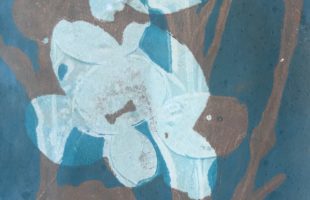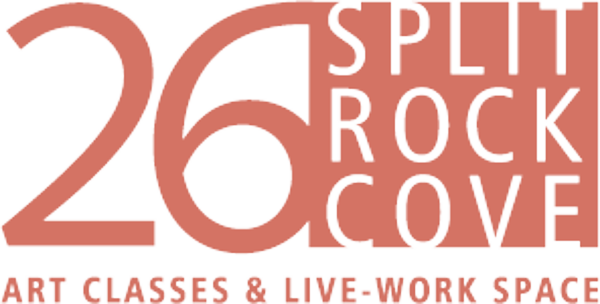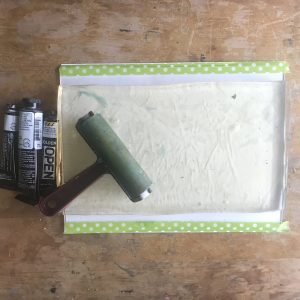
Simply put, the definition of negative space is the area around and between a subject.
I’ve been making gel prints over the last month. A gel print uses gelatin (think Knox gelatin here) as the basis for a printing plate. The texture of the plate then, is slightly jiggly and soft, though not as jiggly as jello because one uses much more gelatin per liquid and some glycerin to keep the plate from getting brittle too quickly.
But the thing about printmaking, all printmaking, is to understand what happens in each successive layer of paint (or ink.) Spaces – positive and negative – created by the first layer can easily get destroyed by the second layer no matter how beautiful the color.
Revealing the subject is what I’m thinking about in these prints, or allowing the subject to become. The negative spaces that one exposes and reveals become the source of mystery and depth.
But just last week, after watching a YouTube video, I got the word about Golden Open acrylics! Oh my. They combine the best of both worlds – beautiful thin layers like the Akua but vibrant like acrylics, plus the open quality of paint that doesn’t dry too soon.
Revealing the subject is what I’m thinking about in these prints, or allowing the subject to become. The negative spaces that one exposes and reveals become the source of mystery and depth.
The advantages of gel prints are that one can print without a press, that it’s a relatively simple process to clean up, and that beautiful colors can be layered without a lot of effort. If one uses plant material as subject matter, fine details can be printed. Other stenciled shapes can be cut and used over and over again. Paints can vary. I have used regular acrylics with great success, and I have used Akua pigments which yield much thinner coats that blend beautifully on the plate with each successive layer of printing. They also don’t dry nearly as quickly as acrylics.
But just last week, after watching a YouTube video, I got the word about Golden Open acrylics! Oh my. They combine the best of both worlds – beautiful thin layers like the Akua but vibrant like acrylics, plus the open quality of paint that doesn’t dry too soon.





